00:49
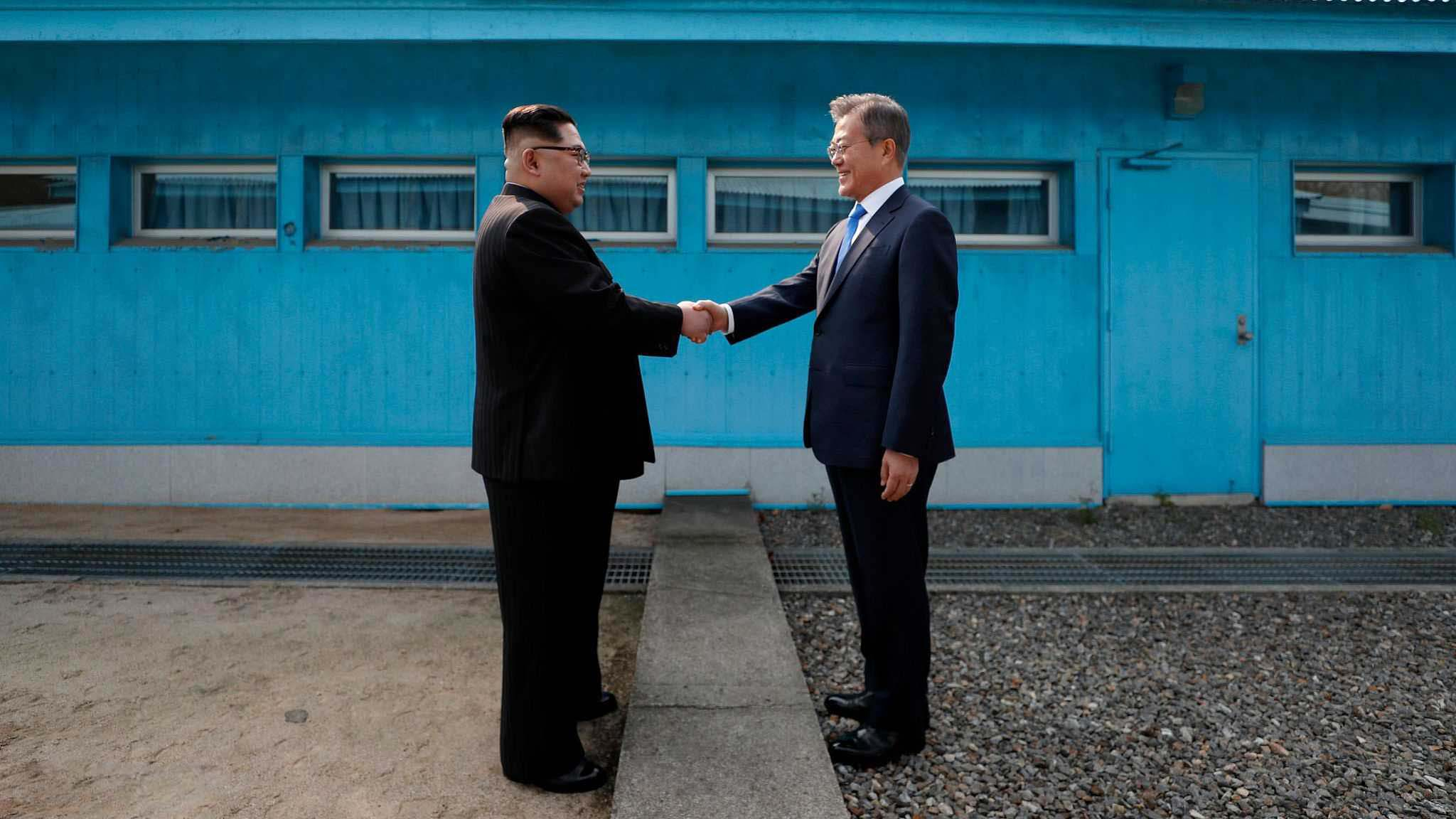
It’s been 65 years since the Korean War ended. But although an armistice was signed on July 27, 1953 putting a halt to the fighting between the Republic of Korea (ROK), the Democratic People’s Republic of Korea (DPRK) and their respective allies, there has never been a formal peace treaty.
This may all change following a historic summit between DPRK leader Kim Jong Un and ROK President Moon Jae-in earlier this year.
So where do negotiations stand and what are the main issues to consider?
1950-1953
Over 2.5 million people, according to some estimates, were killed during the three-year war between the DPRK and the ROK, which also involved China, the US and UN troops.
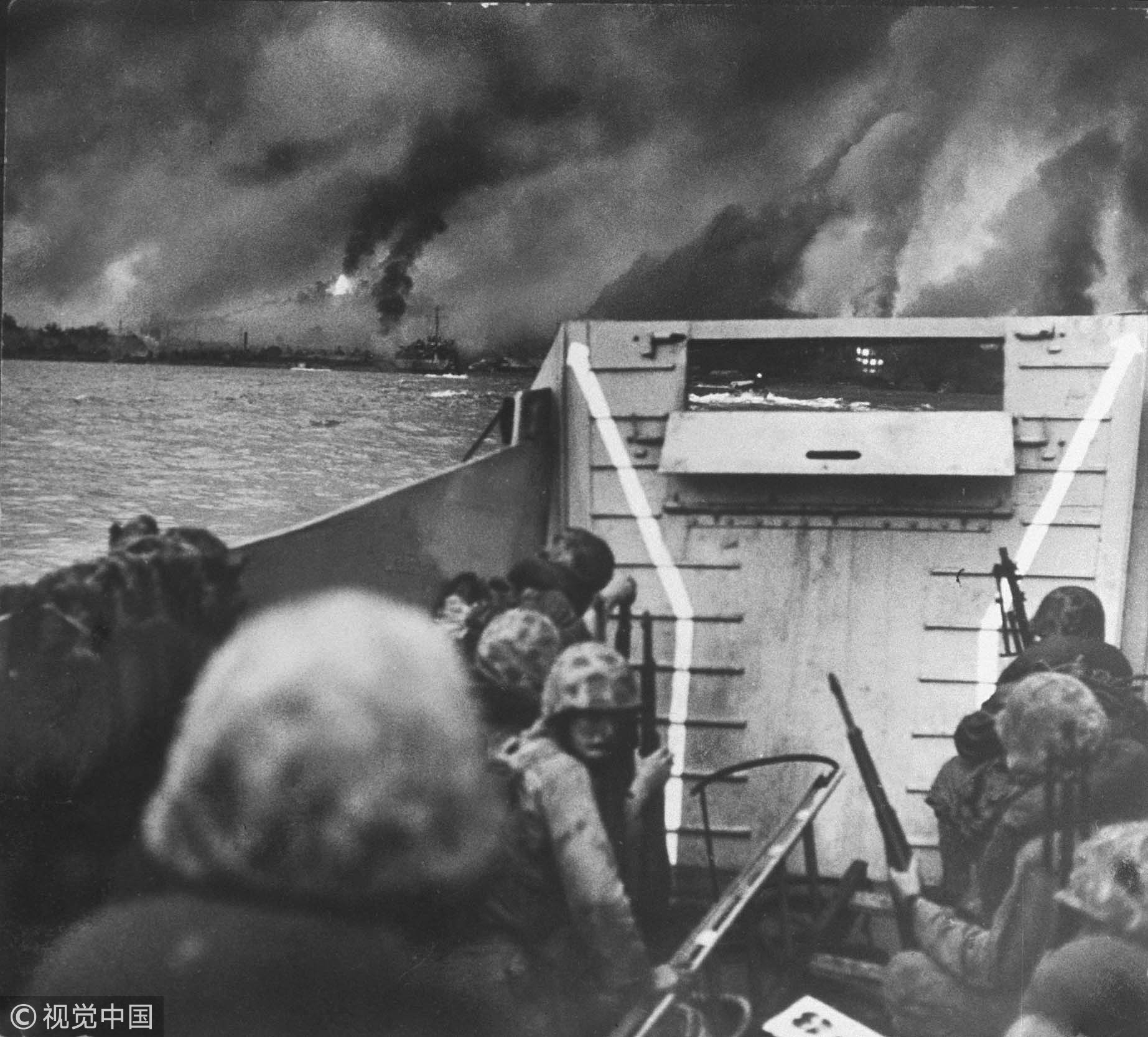
US Marines land at Inchon during the Korean War, around 1950. /VCG Photo
US Marines land at Inchon during the Korean War, around 1950. /VCG Photo
Following a long stalemate, a ceasefire was agreed on July 27, 1953. Without a formal peace treaty however, the DPRK and ROK remain technically at war.
Even today, the two are separated by the Demilitarized Zone (DMZ) – a four-kilometer-wide buffer zone, often referred to as the world’s most heavily militarized border, with troops standing guard on each side.
Panmunjom Summit
Over the intervening decades, there have been attempts to bring the two halves of the Korean Peninsula together.
But efforts to strike a peace deal gained new momentum at a historic summit between Kim and Moon in April, only the third time in over 70 years that the leaders of the two countries met face to face.
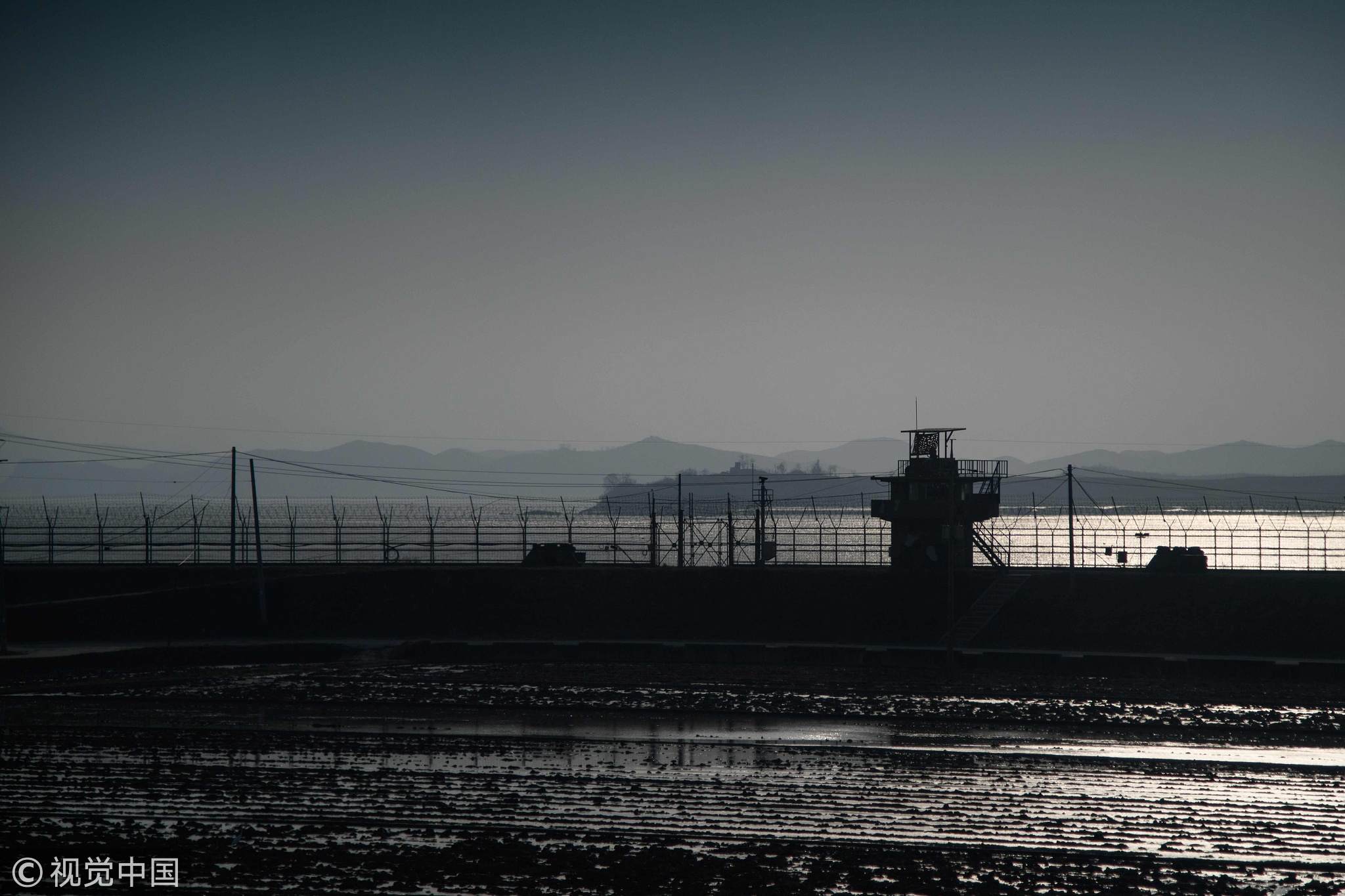
A photo taken on March 18, 2018 shows an ROK guard post before the Demilitarized Zone (DMZ) in Paju, with the DPRK in the background. /VCG Photo
A photo taken on March 18, 2018 shows an ROK guard post before the Demilitarized Zone (DMZ) in Paju, with the DPRK in the background. /VCG Photo
In their Panmunjom Declaration afterwards – named after the DMZ location where they met – Kim and Moon vowed to work together "to establish a permanent and solid peace regime on the Korean peninsula."
"Bringing an end to the current unnatural state of armistice… must not be delayed any further,” they said, vowing to "completely cease all hostile acts against each other" and "to transform the demilitarized zone into a peace zone."
Kim and Moon concluded by saying they would hold further talks and meet again in the autumn to discuss ways to achieve this.
What’s happened since?
The April summit set in motion a range of events.
Barely a month later, Kim and Moon held a second impromptu meeting at the DMZ, which Moon described as "like a routine meeting between friends."
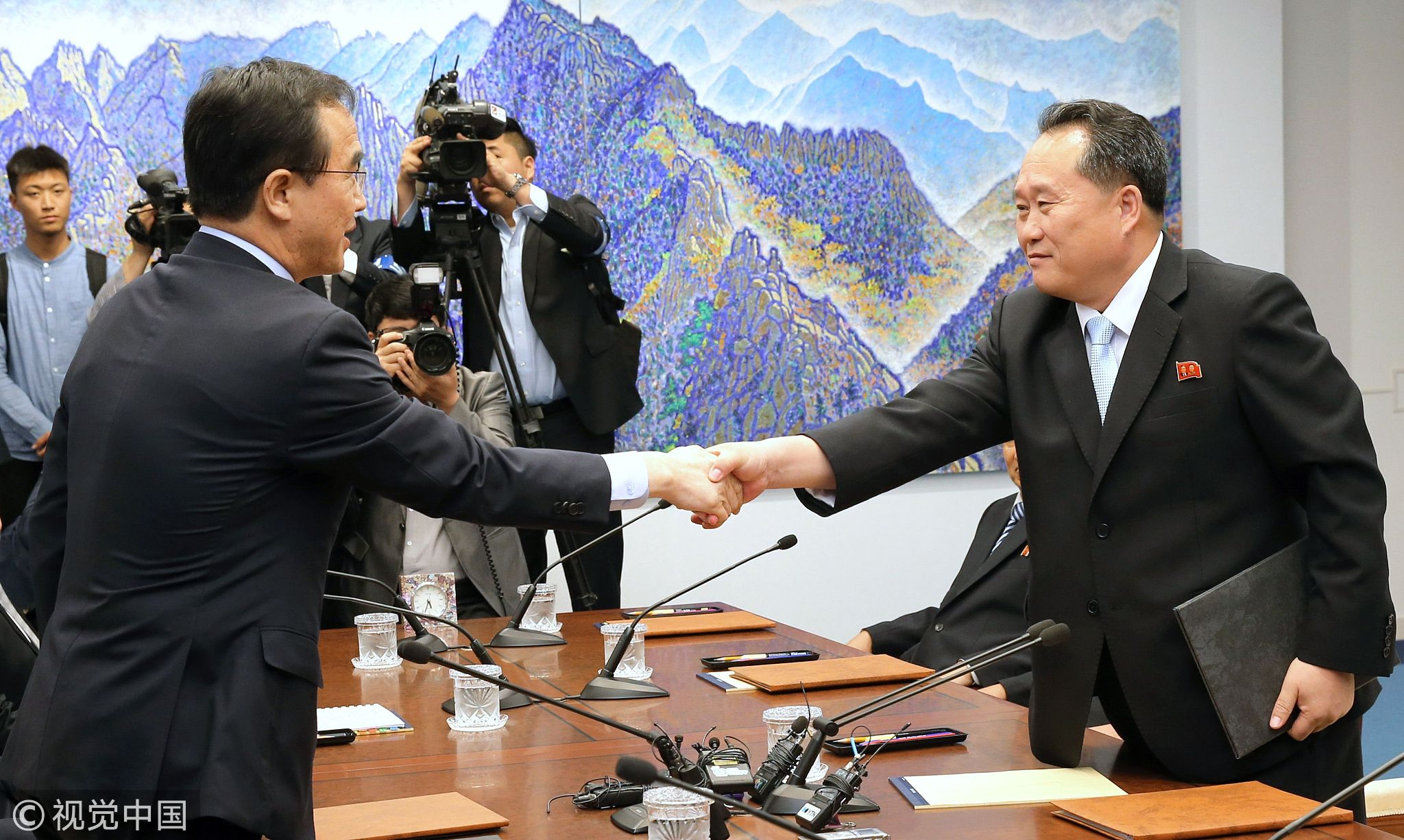
This handout photo taken on June 1, 2018 and provided by ROK Unification Ministry shows ROK Unification Minister Cho Myoung-gyon (L) and Ri Son Gwon (R), chairman of the DPRK's Committee for the Peaceful Reunification of the Country, shaking hands at Panmunjom. /VCG Photo
This handout photo taken on June 1, 2018 and provided by ROK Unification Ministry shows ROK Unification Minister Cho Myoung-gyon (L) and Ri Son Gwon (R), chairman of the DPRK's Committee for the Peaceful Reunification of the Country, shaking hands at Panmunjom. /VCG Photo
On June 1, high-level talks involving ROK Unification Minister Cho Myoung-gyon and Ri Son Gwon, chairman of the DPRK’s Committee for the Peaceful Reunification of the Fatherland, discussed how to implement the Panmunjom Declaration.
There have also been meetings of officials from both sides to discuss cooperation in military affairs, forestry and road and railway links. Red Cross talks have looked at how to reunite families separated since the war.
Main issues
- Denuclearization: probably the most contentious issue on the Korean peninsula is that of the DPRK’s nuclear program. At the June 12 summit in Singapore with US President Donald Trump, Kim vowed to pursue denuclearization. The question now is whether this will be a precondition to a peace treaty, or whether a deal can be struck first, with the promise of denuclearization to follow.
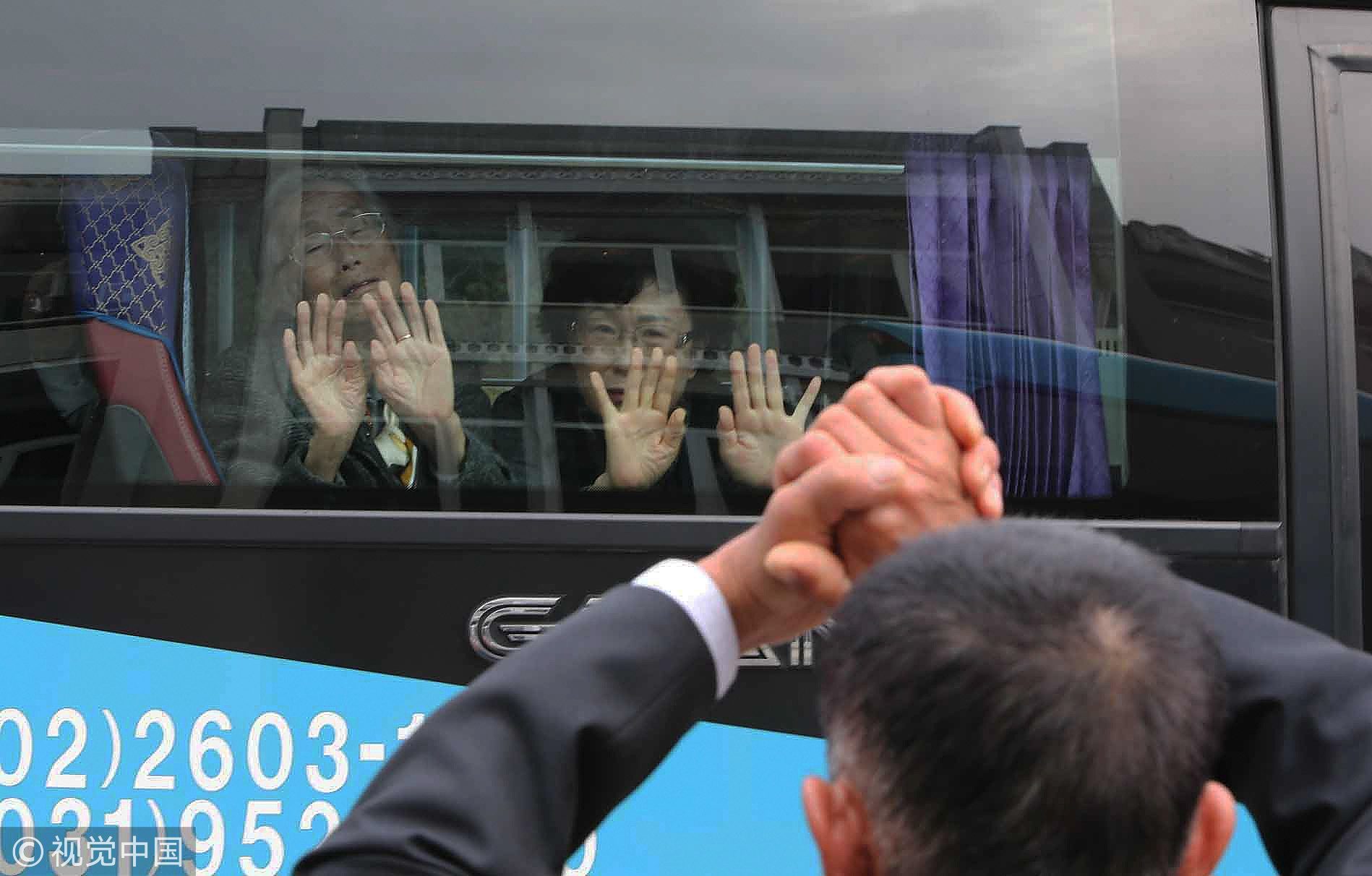
A South Korean woman cries as she bids farewell through the bus window to her son living in the DPRK after a family reunion in Mount Kumgang, DPRK, October 26, 2015. /VCG Photo
A South Korean woman cries as she bids farewell through the bus window to her son living in the DPRK after a family reunion in Mount Kumgang, DPRK, October 26, 2015. /VCG Photo
- Military exercises: the US and ROK hold annual joint military drills which have long angered Pyongyang. These exercises have now been suspended indefinitely, the Pentagon said last month. The next drills had been due to take place in August.
- DMZ: a peace treaty would change the nature of the border. This week, the ROK defense ministry said it was considering reducing troops at the DMZ on a trial basis and was studying a potential “fullscale withdrawal” at a later date.
- Family reunions: tens of thousands of families were separated by the Korean War, with members stranded on either side of the border (DMZ). The process of reuniting these families, most of whom had no contact whatsoever for decades, began in the 1980s but was halted in 2015. Following recent Red Cross talks, a new set of reunions is set to take place in August.
- Kaesong: a DPRK border town, Kaesong was the site of a joint industrial complex, operated by both the ROK and DPRK, until it was closed in 2006. Renovation work is however underway with a view to setting up a liaison office there between the two countries.
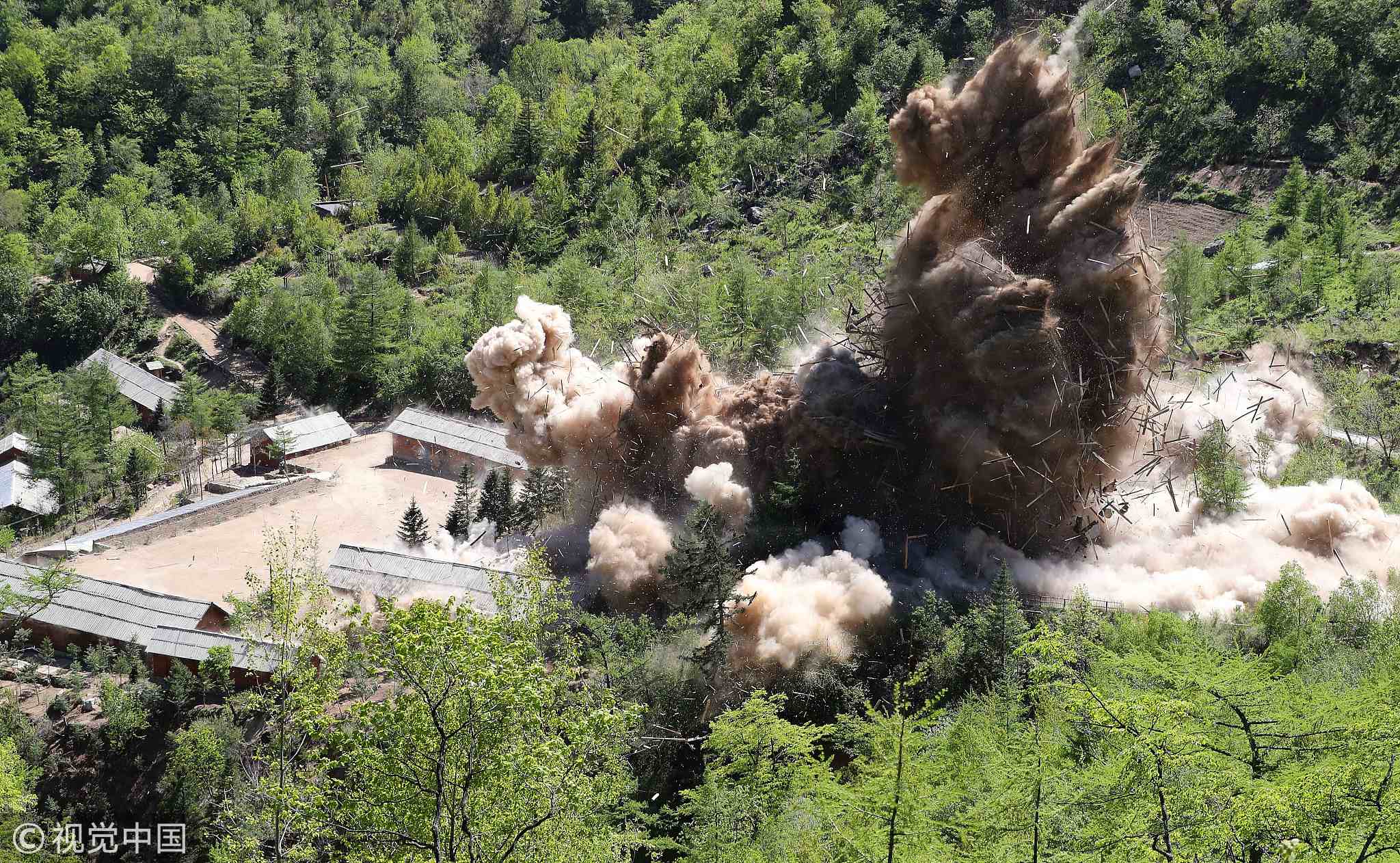
A handout image provided by the News1-Dong-A Ilbo shows the DPRK's Punggye-ri nuclear test site being demolished on May 24, 2018. /VCG Photo
A handout image provided by the News1-Dong-A Ilbo shows the DPRK's Punggye-ri nuclear test site being demolished on May 24, 2018. /VCG Photo
China’s role
A peace treaty will primarily involve the DPRK and ROK.
But as signatories of the 1953 armistice document, China, the UN and the US will also likely have a role to play.
In April, Kim and Moon said they would this year "actively pursue trilateral meetings involving the two Koreas and the United States, or quadrilateral meetings involving the two Koreas, the United States and China with a view to declaring an end to the war."
Already ahead of the summit and twice afterwards, Kim met with Chinese President Xi Jinping in China, where the two discussed peace on the Korean peninsula among other issues, a clear sign according to observers that the DPRK leader valued his neighbor’s advice and support.
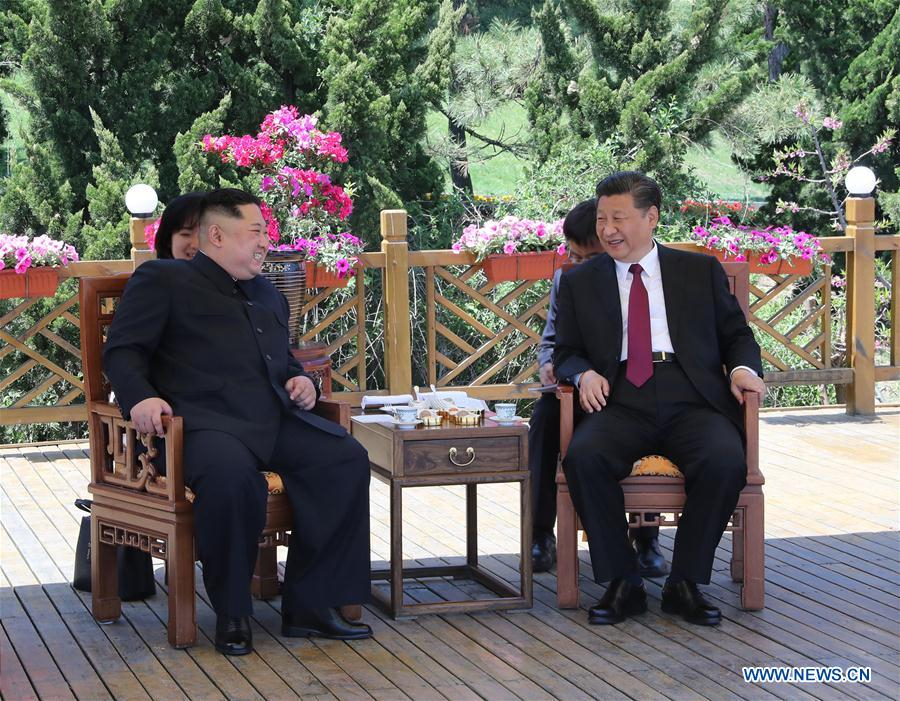
DPRK leader Kim Jong UN (L) and Chinese President Xi Jinping (R) hold talks in Dalian, northeast China, May 7-8, 2018. /Xinhua Photo
DPRK leader Kim Jong UN (L) and Chinese President Xi Jinping (R) hold talks in Dalian, northeast China, May 7-8, 2018. /Xinhua Photo
Kim even went as far as to say that progress in the "Korean Peninsula situation" was one of the “positive outcomes of the historic meeting between me and Comrade General Secretary (Xi)," Xinhua news agency reported in May.
Asked about Beijing’s role in future peace talks, Chinese Foreign Ministry spokesman Geng Shuang told reporters on Wednesday that "China will play its role in ending the war state and replacing the armistice with a peace regime on the Korean Peninsula."
A timeline for peace
When a peace treaty might be signed remains unclear.
ROK Foreign Minister Kang Kyung-wha floated the possibility this week that a formal peace declaration might be made at the UN General Assembly in New York in September.
"(We) are in consultations with related countries for the war-ending declaration at the earliest possible date," Yonhap news agency quoted her as saying.
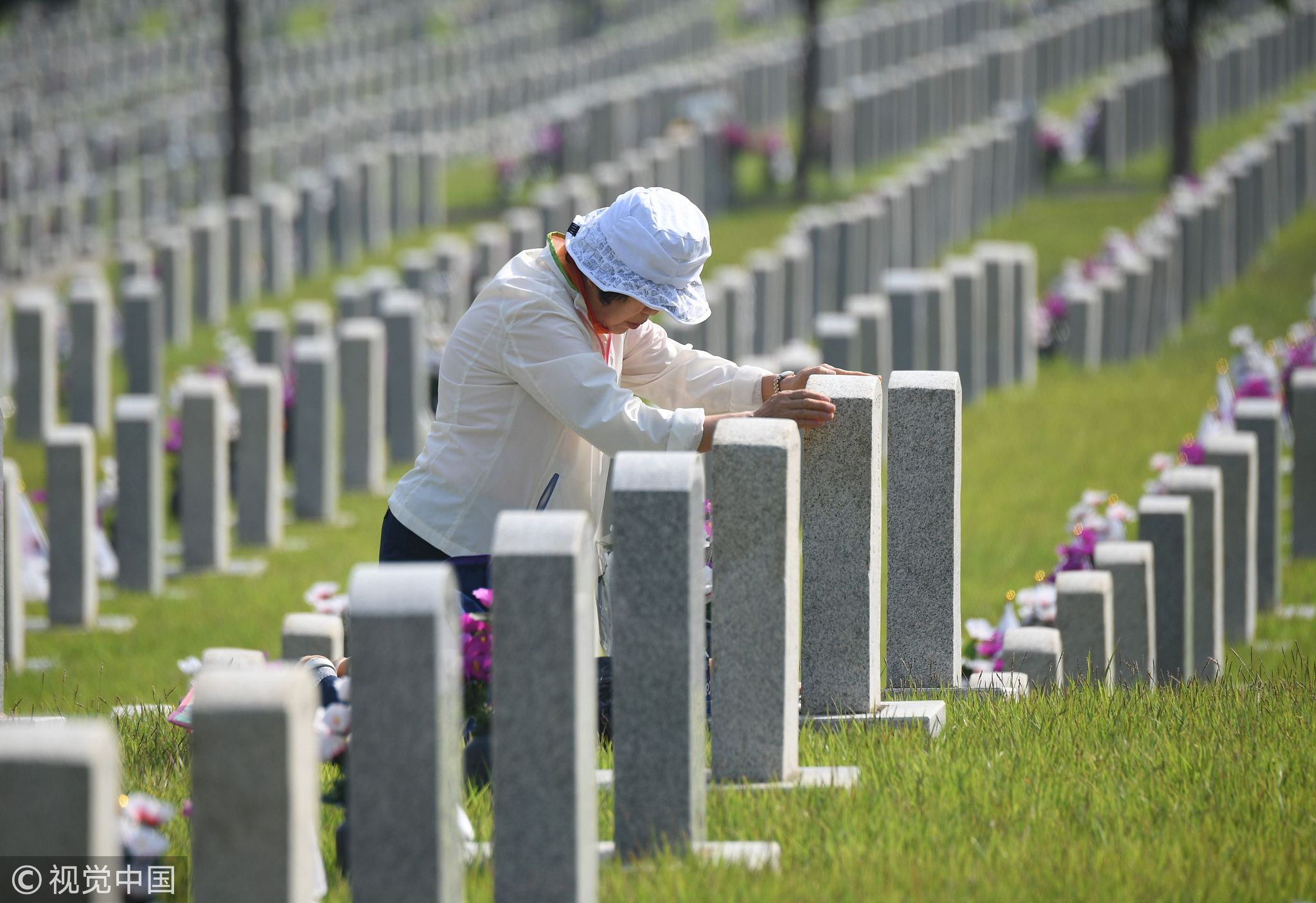
A South Korean woman visits the grave of a relative killed in the 1950-53 Korean War in Seoul, June 6, 2018. /VCG Photo
A South Korean woman visits the grave of a relative killed in the 1950-53 Korean War in Seoul, June 6, 2018. /VCG Photo
Both sides have however acknowledged it will be an uphill climb.
"As the expectations are high, so is the scepticism," Kim told Moon in April.
"This is only a start…When the top of a mountain starts to become visible, taking a step forward becomes even harder," Moon later said.
(Top picture: DPRK leader Kim Jong Un (L) and ROK President Moon Jae-in (R) shake hands at the Military Demarcation Line dividing their two countries, ahead of their summit in Panmunjom, April 27, 2018. /VCG Photo)









